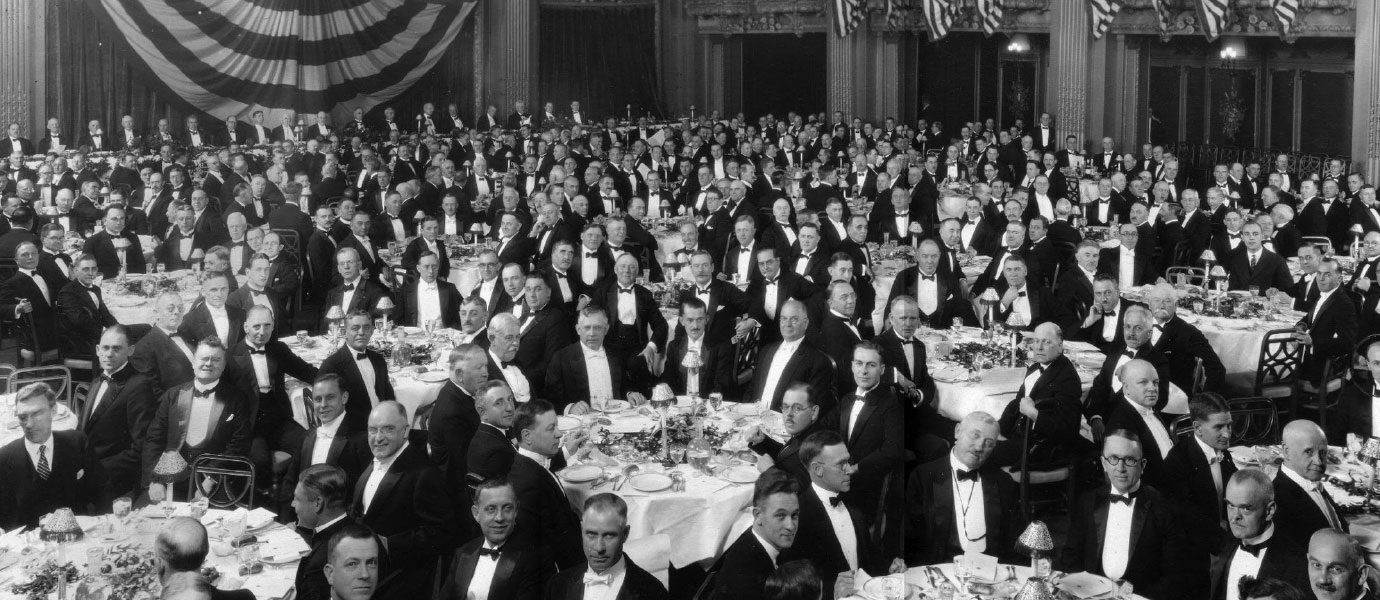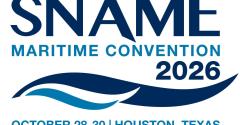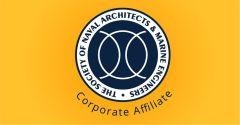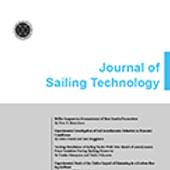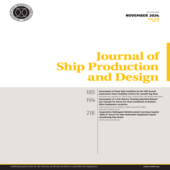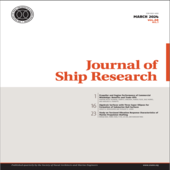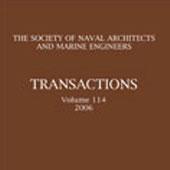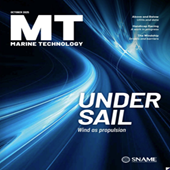Technical and research (T&R) | Bulletins and reports
This Bulletin reviews the state of the art of marine power plants as of 1970 and includes both existing devices such as diesel, steam or gas, turbines, and combinations of these; and some of the advanced technologies; and some of the advanced technologies that could represent possible marine power plants for the future. The review of existing plants covered in other literature is brief, while other nuclear energy superconducting machines and other advanced concepts are discussed in more detail. Also included are related systems and associated subjects such as transmissions, fuels, and propulsive devices.
The purpose of this report is to set forth data and practices for determining the performance of marine diesel power plants. This report is applicable to low or medium speed diesel of the two or four-cycle naturally aspirated or turbocharged types. It is intended that this guide be used for evaluating the performance of diesel propelled ships as compared with those propelled by steam or gas turbines. In order to simplify and standardize these evaluations, the ambient condition selected, the heat content of heavy fuel and other allowances used are the same as in the SNAME Technical and Research Bulletin 3-11 "Marine Steam Power Plant Heat Balance Practices". This report includes methods for comparing diesel performances when burning light, medium, and heavy fuel oil, as well as methods for determining performance when the ambient conditions are other than those selected as standard. Every effort has been made to keep this report as reasonable and fair as possible and close to the general practice of the industry, without curtailing individual initiative, When in the development of a design, specific data for a particular application becomes available, these data should be used in preference to the data given herein. Throughout this Bulletin, reference is frequently made to the SNAME Technical and Research Bulletin 3-11, "Marine Steam Power Plant Heat Balance Practices", where data on steam auxiliaries are required. ½ here referenced, it is referred to as T & R 3-11.
The purpose of this bulletin is to set forth data and practices for determining the performance of marine gas turbine power plants. This report is applicable to both the aircraft derivative and industrial types. It is intended that this guide is used for evaluating the performance of gas turbine propelled ships as compared with those propelled by diesel engines or steam turbines. In order to simplify and standardize these evaluations, the ambient condition selected, the heat content of the fuel and other allowances used are the same as or compatible with those in the SNAME Technical and Research Bulletin 3-11 “Marine Steam Power Plant Heat Balance Practices”.
This report includes methods for comparing gas turbine performances when burning light, medium, and heavy fuel oil, as well as methods for determining the performance when the ambient condition are other than those selected as standard. Every effort has hen made to keep this report as reasonable and fair as possible and close to the general practice of the industry, without curtailing individual initiative. When in the development of a design, specific data for a particular application becomes available, these data should be used in preference to the data given herein. Throughout this bulletin, reference is frequently made to the SNAME Technical and Research Bulletin 3-11. “Marine Steam power Plant Heat Balance Practices”, and Bulletin 3-27, “Marine Diesel Power Plant Performance Practices”, where data on steam auxiliaries is required. Where referenced, they are referred to as T & R 3-11 or T & R 3-27.
The Ship's Machinery Committee, at the direction of the Steering Committee of the Society of Naval Architects and Marine Engineers' Technical and Research Program, on 11 March 1964 formed Panel M-21 (Automation of Ship's Propulsion Plant). The task of the panel was to examine the design and operational practices and from these considerations develop criteria for technical guidance in establishing the desired degree and methods for employing centralized control and automating a ship's propulsion plant. In December 1970, the work of Panel M-21 was published in SNAME Technical and Research Bulletin No. 3-23, "Guide for Centralized Control and Automation of Ship's Steam Propulsion Plant". A new guide on gas turbine automation was begun in June 1972 with the same objectives as the earlier guide on steam automation. This guide prepared by a consensus of the M-21 panel represents the diverse expertise of the panel members. However, the philosophy and implementation concepts of centralized control and automation presented here are not the only approaches in this rapidly developing field. Valuable additional information is available from classification societies, professional organizations, industry, and government agencies.
This report provides information and guidance to designers, shipbuilders and ship operators on the proper procedures for boiler preservation and care, from component manufacture till ship commissioning. The guidelines cover types of preservation and application, inspection procedures, lay-up procedures, and removal of preservation. The time prior to vessel delivery is unique in the lifetime of the boiler. By use of the proper boiler protection procedures, it can be assured that the boilers will begin their ultimate use in optimum condition.
This publication is intended to provide a useful guide to world-wide material specifications for seawater systems. United States specifications (ASTM, ACI, CDA, MIL, FED, UNS*), where assigned, are given for selected cast and wrought alloys, together with the corresponding equivalent, or near equivalent, specifications of Germany (DIN), United Kingdom (BS), Japan ()IS), France (AFNOR), Italy (UNI), and Korea (KS). The following tables containing equivalent or near equivalent specifications are divided into two major categories: cast alloys and wrought alloys. Within these two categories, various irons, steels, stainless steels, and copper and nickel base alloys are considered, as appropriate. A listing of the specification writing organizations referred to in this guide is given in Table 1.
*A UNS number is not in itself a specification; it is a unified identification system of metals and alloys for which controlling limits have been established in specifications published elsewhere.
SNAME’s Technical and Research Bulletin No. 3-14 "Boiler Furnace Performance Criteria" was first published in 1963, and has been useful in determining furnace loading of various designs of oil-fired boilers. This Bulletin 3-32 supersedes 3-14 by expanding the considerations to gas and coal firing. This report is advisory only and there is no implication of endorsement by the Society as a whole for the methodology contained herein.
The M-17 Panel "Disposal of Shipboard Wastes" was formed to investigate the adequacy of American Flag vessels to properly dispose of shipboard wastes and to divulge recommendations for meeting this need. The first meeting of the Panel was on September 14, 1960, the Panel considered the following shipboard wastes:
1. Oils and greases
2. Garbage and trash
3. Wastes of human origin
The following suggestions, based upon the findings of the Panel, are offered for consideration by marine design, construction, and operating personnel. Some of the points are well known and already incorporated in some vessels, but are mentioned here to provide a checklist of features to be included, The Panel recommends that specific design criteria be developed in conjunction with recognized authorities in each of the fields covered. The Guide is divided into three major sections dealing with the three classes of wastes considered.
This Bulletin was compiled to identify a variety of technical, economic, and environmental factors that should be considered by a ship operator, design agent, or other organization in the marine industry in making an analysis of using coal as a fuel for merchant ships. The technology of burning coal is well established but these various factors have many aspects that need to be resolved and evaluated. Briefly discussed are ecological aspects, governmental and public attitudes; the characteristics of various types of coal which relate to its use in ships; considerations regarding various types of equipment for putting coal aboard and removal of ash from ships; the influence that the unique requirements and constraints of coal use have on the design of a ship, its. boiler and auxiliary machinery; and aspects of ship operation that apply to coal-burning vessels.
